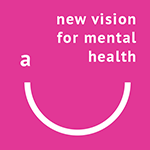From an article by Benedict Carey in The New York Times:
“The deaths of the designer Kate Spade and the chef Anthony Bourdain, both of whom committed suicide this week, were not simply pop culture tragedies. They were the latest markers of an intractable public health crisis that has been unfolding in slow motion for a generation.
“Medications and psychiatric treatment are more widely available than ever, yet suicides in the United States are on the rise.”
Treatment for chronic depression and anxiety — often the precursors to suicide — has never been more available and more widespread. Yet the Centers for Disease Control and Prevention this week reported a steady, stubborn rise in the national suicide rate, up 25 percent since 1999.
The rates have been climbing each year across most age and ethnic groups. Suicide is now the 10th leading cause of death in the United States. Nearly 45,000 Americans killed themselves in 2016, twice the number who died by homicide.
After decades of research, effective prevention strategies are lacking. It remains difficult, perhaps impossible, to predict who will commit suicide, and the phenomenon is extremely difficult for researchers to study.
One of the few proven interventions is unpalatable to wide swaths of the American public: reduced access to guns. The C.D.C. report found that the states where rates rose most sharply were those, like Montana and Oklahoma, where gun ownership is more common.
It is predominantly men who use guns to commit suicide, and men are much less likely to seek help than women.
The escalating suicide rate is a profound indictment of the country’s mental health system. Most people who kill themselves have identifiable psychiatric symptoms, even if they never get an official diagnosis.
The rise in suicide rates has coincided over the past two decades with a vast increase in the number of Americans given a diagnosis of depression or anxiety, and treated with medication.
The number of people taking an open-ended prescription for an antidepressant is at a historic high. More than 15 million Americans have been on the drugs for more than five years, a rate that has more than tripled since 2000 …”
Read more here.




